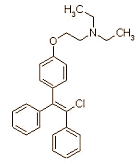|
Definition: "An ergogenic aid is any substance or phenomenon that enhances performance "
|
|
||||||||
08.12.2011 |
|
|
Study shows clomiphene is suitable for hormone therapy
Young men who produce too little testosterone may be better off using an anti-oestrogen like clomiphene citrate instead of synthetic testosterone. Endocrinologists at the Memorial Sloan-Kettering Cancer Center in New York came to this conclusion after analysing cases of 86 men who had tried out this alternative form of hormone therapy.
The big disadvantage to prescribing testosterone is clear: if men produce too little testosterone, usually their pituitary is producing too little LH, the hormone that stimulates the production of testosterone in the testes. And the production of LH is regulated by yet another hormone, GnRH.
So what happens if you give synthetic testosterone to a man who makes too little of his own testosterone? His testosterone production stops completely. So that's not an optimal solution.
The men in the New York study were aged between 22 and 37. They were given clomiphene for an average of 19 months. Seventy percent of them took 25 mg every other day; the rest took 50 mg every other day.
The table below shows that the concentration of free testosterone rose by more than a factor of 5 as a result of the clomiphene administration. The men's estradiol levels also rose, but none of them started to form breasts. It would have been strange if they had done from using clomiphene.
The men reported that they felt better when asked the same questions that doctors usually ask of patients who have had testosterone therapy. In the tables above, where the P is less than 0.05, the effects are statistically significant. The effects on the men's sports performance were strongest.
"Clomiphene citrate is an effective and safe alternative to testosterone supplementation therapy in hypogonadal men", the researchers conclude. "Clomiphene citrate therapy has a role to play in the testosterone deficient man and should be incorporated into the clinician-patient discussion."
Source:
More:
|
|


